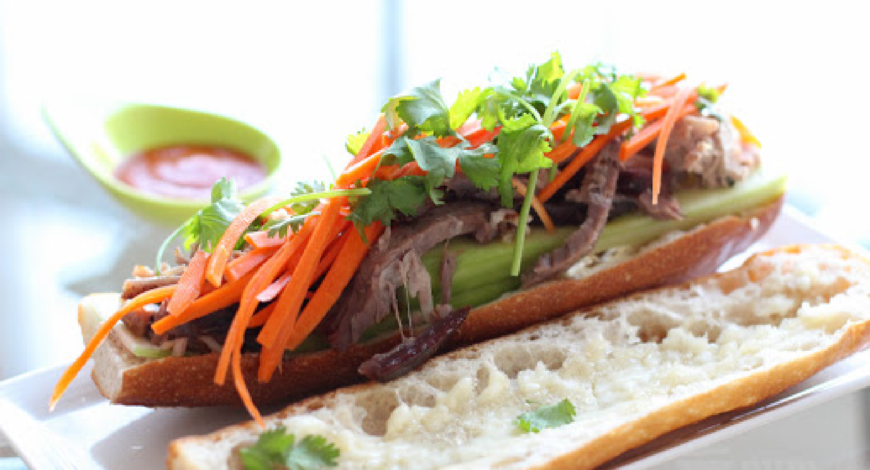Bánh Mì, the iconic Vietnamese sandwich, has gained worldwide recognition alongside phở, spring rolls, and Vietnamese coffee. This culinary masterpiece combines a symphony of Vietnamese cold cuts, pickled vegetables, savoury pâté, fresh herbs, and various delectable sauces, all harmoniously nestled within a light and flaky baguette.
Dive into the fascinating history of Bánh Mì, from its French culinary origins to its transformation into a beloved global delight.
The History of Vietnamese Bánh Mì
Initially, “bánh mì” referred simply to bread or a baguette. It wasn’t until this extraordinary sandwich gained international acclaim that the name became synonymous with the delicious creation we know today.
The bánh mì began in French cuisine when French colonizers imported European ingredients such as bread, cheese and butter into their Indochina colonies. For a long time, local Vietnamese were unable to afford such delicacies. And when they did, it was typically eaten the French way – with a spread of cold cuts and dairy products.
The French used their culture and food to suppress the Vietnamese. Thinking that their palate was superior, they forbid any fusion or mixing of their cuisines, and they maintained this strict stratification until their eventual removal in the late 1950s.
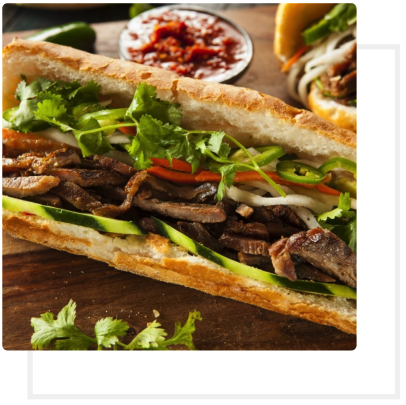
Free from foreign influence, Vietnamese chefs quickly adapted the Bánh Mì to fit the local palate and lifestyle. Cheese and butter were substituted for mayonnaise and pâté. Fresh herbs and pickled vegetables made use of their accessibility to quality local produce, and placing it all between a French baguette was the pièce de résistance – Vietnam was finally free from its colonial masters.
Bánh Mì, like other internationally famous dishes such as phở, spring rolls and broken rice, was traditionally eaten as a cheap and quick meal. Commonly eaten for breakfast, the sandwich was convenient for commuters and students who had to eat on their way to work or school.
Today, the Bánh Mì can be found anywhere where there’s a solid Vietnamese diaspora community, leading to many variations on the classic sandwich formulated to fit the local taste and preferences of the community.
Despite these differences, a few elements are endemic within every Bánh Mì. Here’s what they are:
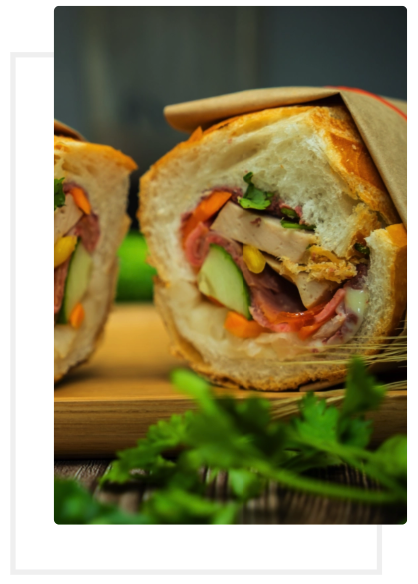
Bánh Mì 101 – Ingredients
Bánh Mì
The star of the show. You can’t have a Bánh Mì without a Bánh Mì!
Confused?
As we mentioned, “bánh mì” traditionally referred to a bread or French baguette. It wasn’t until the sandwich became famous worldwide that a new understanding of the word was adopted.
What makes a Vietnamese Bánh Mì so unique?
It’s all in the bread.
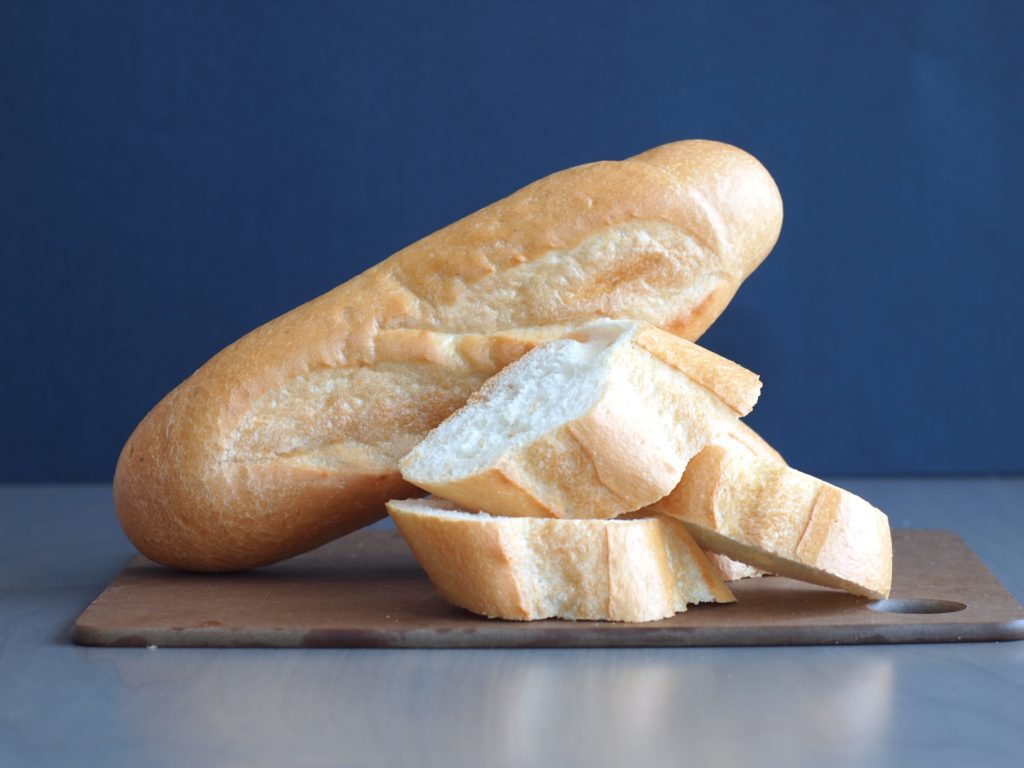
Unlike French baguettes, which are usually longer and denser in shape, Vietnamese baguettes are shorter, lighter and flakier. Cut lengthwise, the texture and overall flakiness of the crumb make it a perfect vehicle to deliver all of the delicious ingredients found in a Vietnamese Bánh Mì. The bread tenderly gives way to paté, then creamy mayonnaise before cuts of pork and crisp bites of pickled vegetables enter into the equation, forming a perfect harmony of textures.
It wouldn’t be a Bánh Mì without the bread. This is so true that many Vietnamese delicatessens, Ba Le Deli included, bake their baguettes in-house. The proof is in the pudding, as they say, but in this case, it is in the bánh mì!
Paté
Paté is common in all Bánh Mì, and for good reason. The creamy and savoury spread adds a unique flavour to the sandwich that can’t be found anywhere else.
Commonly made from pig’s liver and a mixture of meat, vegetables and spices, paté keeps the Bánh Mì from getting too dry. While pre-made paté is readily available in most supermarkets, many Bánh Mì places, Ba Le Deli included, create their blend in-house.
This way, they can create a unique flavour and accompaniment to their sandwiches that are exclusive to that store.
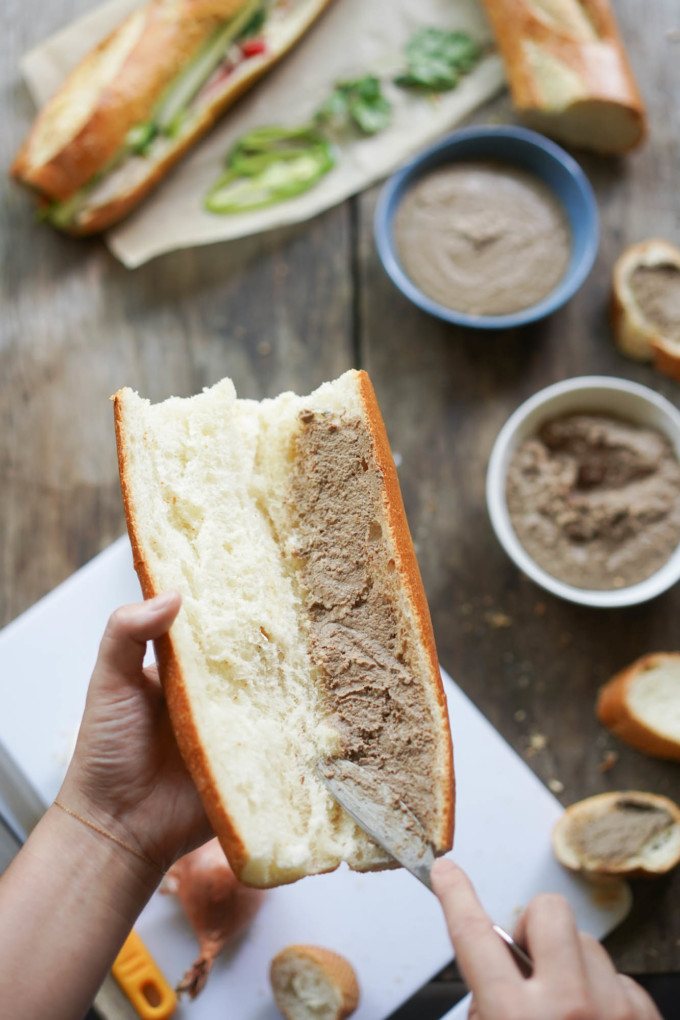
Mayonnaise
The second, saucey accoutrement to a Bánh Mì, mayonnaise is spread on the baguette to prevent the sandwich from getting too dry. Originally, mayonnaise was meant to substitute the cheese and butter that French colonizers had imported and enjoyed with their baguettes. Since Vietnam hosts a tropically hot and humid climate, such dairy products would not keep long under the Vietnam sun.
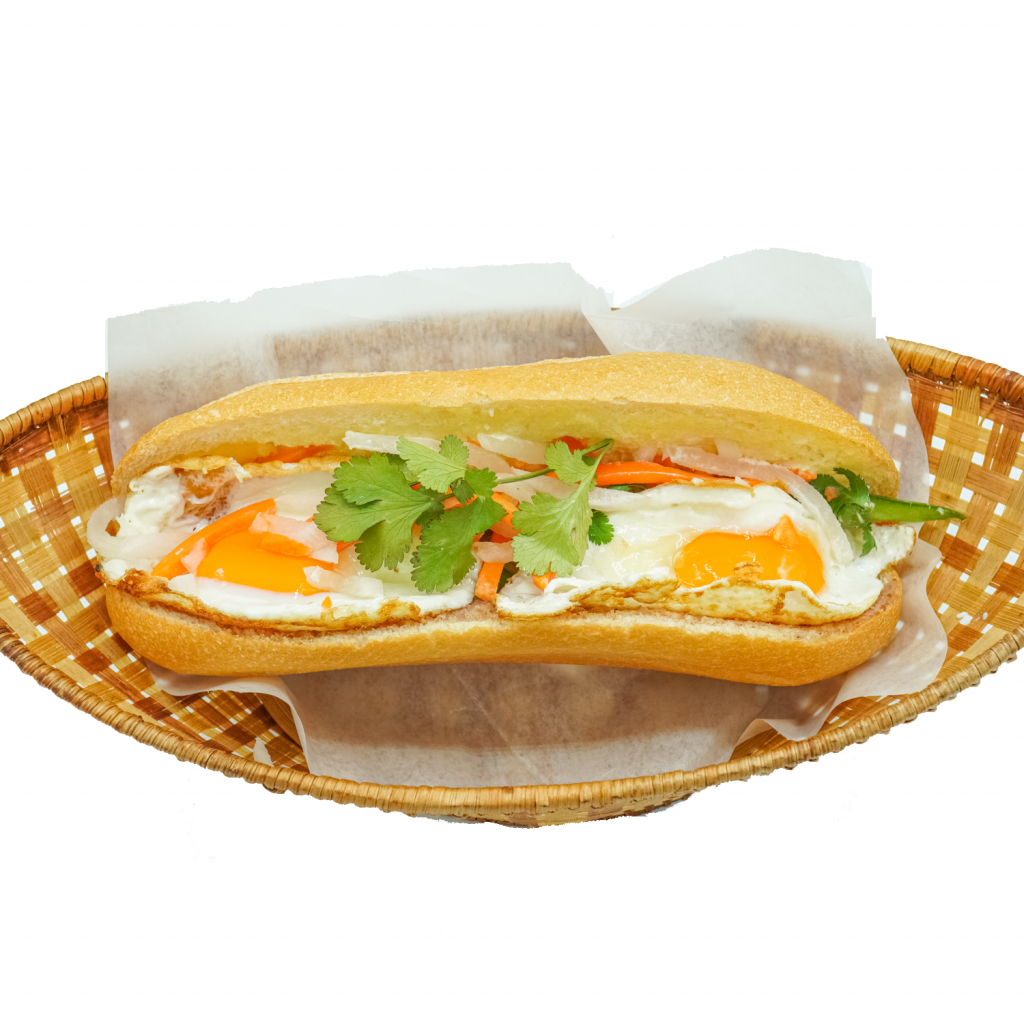
The substitution of mayonnaise had the dual effect of increasing the sandwich’s shelf-life and making it portable – allowing it to be eaten anywhere and on the go.
Vietnamese Cold Cuts
It wouldn’t be a sandwich without the filling, and the Bánh Mì is no exception. Similarly to the French, the Vietnamese had meat accompany their bread.
The exception? They placed it inside the sandwich instead of outside.
Where the French ate their meats and bread on a spread similar to a charcuterie board, the Vietnamese needed something convenient and portable to fit in with their bustling and slowly modernizing industrial life. In many ways, the Bánh Mì was an invention of necessity – an affordable yet delicious way to enjoy a full meal without having to sit down and stop to eat it.
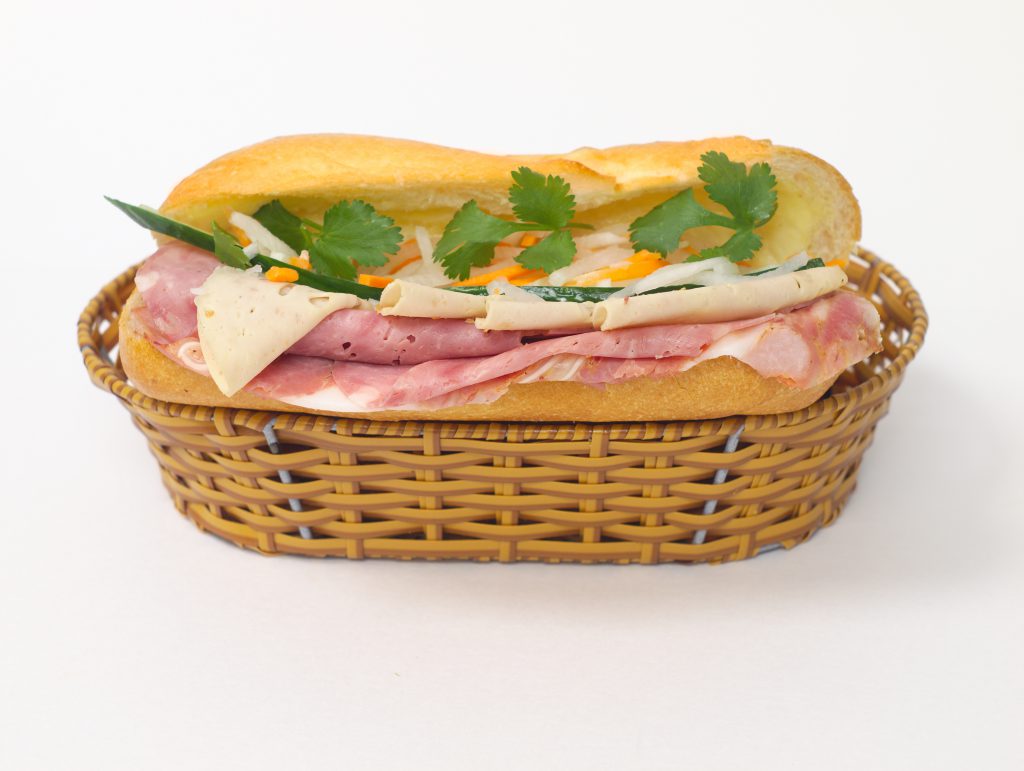
Today, Vietnamese cold cuts are still a mainstay of the Bánh Mì. Ham, Vietnamese sausage and minced pork are commonly included in Bánh Mì worldwide, with some electing to use grilled meats instead. Cold cuts’ saltiness provides a refreshing contrast against the other ingredients in the Bánh Mì.
Vegetables
It wouldn’t be a Bánh Mì without vegetables, and with a Bánh Mì, it’s all about freshness. Pickled daikon radishes and carrots, cucumber and cilantro are commonly included in Bánh Mì to give the sandwich a fresh bite, with some Bánh Mì vendors including mint, scallions and even chilli.
These vegetables add a crunchy texture to the sandwich and help cut the richness and fat from the pâté, mayonnaise and cold cuts. They’re an essential ingredient in Bánh Mì, but if you’re not particularly interested in some of the extreme flavours of some of these herbs, you can always ask your sandwich artist to opt-out from including them!
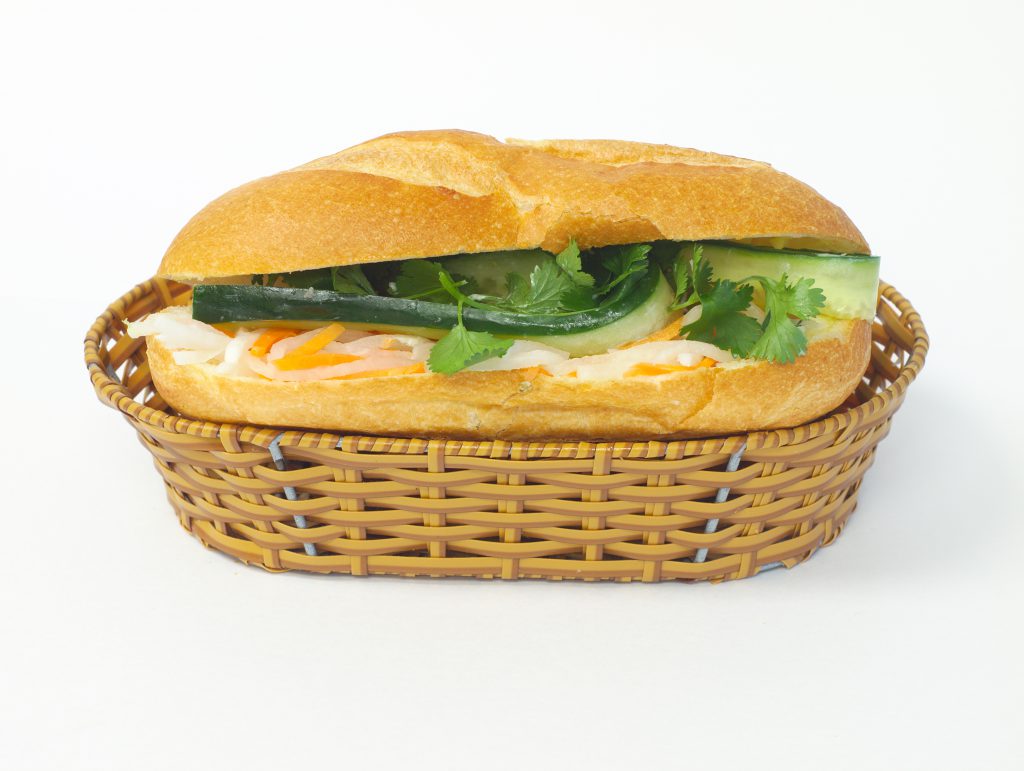
Bánh Mì 101 – Built to Your Tastes
While these ingredients are commonly included in all Bánh Mì, that doesn’t mean you must have them!
The best part about visiting a local Vietnamese delicatessen is that you can be the master of your sandwich. If you don’t like something and want to be excluded or something that you love and want extra of, just let your sandwich artist know! At Ba Le Deli, we love serving our community and have been doing so for over 30 years. Check out our menu and create your perfect Bánh Mì today. Let us customize your sandwich to your liking so you can experience the taste and freshness of an authentic Vietnamese Bánh Mì.
